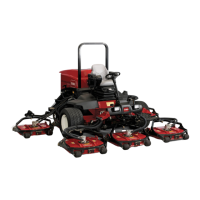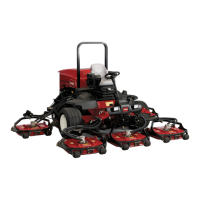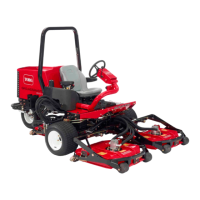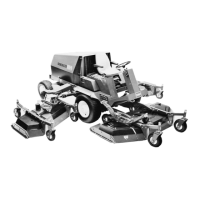22
Danger
Under certain conditions, diesel fuel and fuel
vapors are highly flammable and explosive. A fire
or explosion from fuel can burn you and others
and can cause property damage.
• Use a funnel and fill the fuel tank outdoors, in
an open area, when the engine is off and is cold.
Wipe up any fuel that spills.
• Do not fill the fuel tank completely full. Add fuel
to the fuel tank until the level is 1/4 to 1/2 in. (6
to 13 mm) below the bottom of the filler neck.
This empty space in the tank allows the fuel to
expand.
• Never smoke when handling fuel, and stay away
from an open flame or where fuel fumes may be
ignited by a spark.
• Store fuel in a clean, safety-approved container
and keep the cap in place.
3. Open the air bleed screw on the fuel injection pump
(Fig. 14).
4. Turn the key in the ignition switch to the On position.
The electric fuel pump will begin operation, thereby
forcing air out around the air bleed screw. Leave the key
in the On position for 15 seconds. Air and fuel will be
internally drained back to fuel tank. Tighten the screw
and turn the key to Off.
1
Figure 14
1. Fuel injection pump bleed screw
Note: Normally the engine should start after the above
bleeding procedures are followed. However, if the engine
does not start, air may be trapped between the injection
pump and injectors; refer to Bleeding Air from the
Injectors, page 35.
Checking the Interlock
Switches
If safety interlock switches are disconnected or
damaged the machine could operate unexpectedly
causing personal injury.
• Do not tamper with the interlock switches.
• Check the operation of the interlock switches
daily and replace any damaged switches before
operating the machine.
• Replace switches every two years or 1500 hours,
whichever occurs first, regardless of whether
they are operating properly or not.
Caution
The machine has interlock switches in the electrical system.
These switches are designed to stop the engine when
operator gets off of the seat when the traction pedal is
depressed. However, the operator may get off of the seat
while the engine is running and the traction pedal is in
neutral. Although the engine will continue to run if the PTO
lever is disengaged and the traction pedal is released, it is
strongly recommended that the engine be stopped before
rising from the seat.
To check the operation of the interlock switches, perform
the following procedure:
1. Drive the machine slowly to a large, relatively open
area. Lower the cutting unit, stop the engine, and apply
the parking brake.
2. Sit on the seat and depress the traction pedal. Try to
start the engine. The engine should not crank. If the
engine cranks, there is a malfunction in the interlock
system that should be corrected before beginning
operation.
3. Sit on the seat and start the engine. Rise from the seat
and move the PTO lever to On. The PTO should not
engage. If the PTO engages, there is a malfunction in
the interlock system that should be corrected before
beginning operation.
4. Sit on the seat, engage the parking brake and start the
engine. Move the traction pedal out of the neutral
position. The engine should kill. If the engine does not
kill, there is a malfunction in the interlock system that
should be corrected before beginning operation.
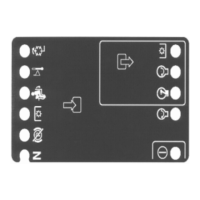
